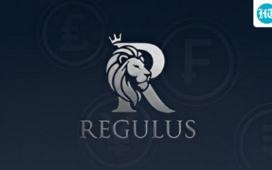Just imagine you’re standing on the ledge of a three-storied building that’s on fire.
Smoke fills the air, heat presses against your skin, and you know the only way to survive is to jump within the next 30 seconds.
You would jump, right?
Now imagine your whole team is there with you — your colleagues, your people, your organization.
You turn to them and shout, “Jump!”
Would they jump because you said so?
Or do they have second thoughts, uncertain if they can trust your call?
This simple metaphor captures one of the hardest truths about leadership: people don’t follow instructions; they follow trust.
The Fire Test of Leadership
Every leader at some point in his or her career stands on a “burning building”—a moment of crisis, uncertainty, or change. It could be a business downturn, a technological disruption, or an internal culture in need of renewal.In such moments, plans and presentations are less important than the invisible currency that really motivates commitment – Belief.
Leaders can announce new strategies, restructure teams, and invest in innovation, but if their people don’t trust their intent, progress stalls.Unlike authority, trust cannot be commanded. It must be earned—one honest conversation, one fair decision, one courageous act at a time.
Five Shifts All Leaders Must Make
- From Commanding to Connecting: Traditional leadership was based on authority; modern leadership thrives on authenticity.Today’s employees don’t respond to hierarchy; they respond to humanity.A true leader connects through empathy, listens without judgment, and stands beside people during difficult times. Connection, not control, is the new power.
- From Performance Pressure to Psychological Safety: Many organizations want creativity, yet punish mistakes.That tension kills innovation.A culture of psychological safety — one that encourages speaking up, questioning, and even failing — is central to high performance. When people feel safe, they take smart risks. They grow.
- From Individual Glory to Shared Growth: The heroic, omniscient leader is no longer relevant.Great leaders don’t seek followers; they build co-owners.They share the credit, make room for others to shine, and count success as the number of people who rise with them.Shared growth creates sustainable organizations.
- From Managing Work to Enabling Meaning: Today, professionals aren’t just looking to collect a paycheck; they’re looking for meaning.Engagement becomes natural when leaders help employees see how their role connects to a greater mission.Purpose turns plain effort into excellence.
- From Reacting to Reflecting: In a world obsessed with speed, reflection is a superpower.Leaders who can stop, ask questions, and reflect make much wiser, balanced decisions.The best leaders know that slowing down isn’t weakness—it’s clarity.
The Trust Dividend
When employees feel seen, valued, and believed in, something powerful happens.They stop waiting for directions and start taking ownership.
They innovate, collaborate, and step into challenges not because they were told to, but because they believe in the journey.
Trust is a multiplier of performance. It converts workplaces into communities and compliance to commitment.
The Final Reflection
Leadership is no more about standing on the ledge and commanding others to leap. Today, it’s about earning the faith that makes people want to leap—with you, for you, and for the shared vision ahead.So, the real question each leader has to ask is:If your building was on fire and your team stood beside you — would they jump?
Zaved Parvez is a Business & Life Coach and Corporate Professional


 For all latest news, follow The Daily Star’s Google News channel.
For all latest news, follow The Daily Star’s Google News channel. 


